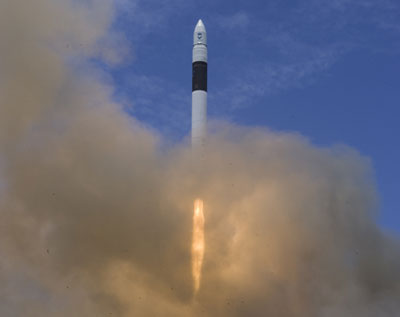Getting thereby Derek Webber
|
| The consequence has been to remove any possible doubt that we are now on our way into orbit, and that US-based orbital space tourism will follow the coming satellite launches and ISS COTS supply missions. |
As had been the case at Mojave in June 2004 for the first flight into space of SpaceShipOne, this flight was highly significant in a number of ways that indicate a future in space very different from the experience during the first half-century of space flight. First of all, the technical and management achievement itself deserves recognition. This vehicle, and its launch, was the product of a small, young team at a startup company that did not even exist before 2001. They designed and built Falcon 1 from scratch as a low-cost launcher. On only its second test flight it flew into space and achieved what historically would have taken governments and major prime manufacturers a score of launches to deliver.
Secondly, this was a very public demonstration. The live webcast and the on-board camera gave access in real time to the general public. Elon Musk has made no secret about where he’s ultimately going, and he has shown his willingness to take us along with him for the ride.
Thirdly, the recycle/restart decision was extraordinary. It was conducted in the full awareness of the public visibility, and was conducted with calm professionalism. The outcome is a validation of the high level of confidence that characterizes the SpaceX management and procedures.
So, the consequence has been to remove any possible doubt that we are now on our way into orbit, and that US-based orbital space tourism will follow the coming satellite launches and ISS COTS supply missions. Of course, there is still much to be done, starting with figuring out what caused the fixed frequency, increasing amplitude second stage oscillations at loss of signal (it looked like fuel sloshing to me, and now since we were all there, we can all have an opinion!). But now we know for sure that this team will be able to fix it.
The demonstrated one-hour turn around capability of this vehicle, on this isolated miniature island with its small but dedicated launch team, was salutary. Meanwhile, backed by the full resources at the Kennedy Space Center, the Space Shuttle Atlantis takes a month to trundle back and forth to its pad to recover from hailstone damage.
